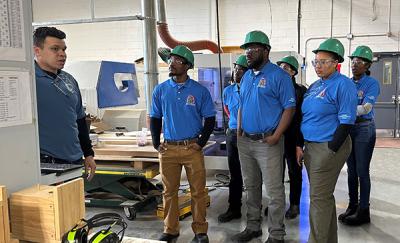Authors
Marissa Cuellar, Lauren Dunton, Nichole Fiore, Victoria Phillips, Amanda Yoshioka-Maxwell, Abt Global
This report, “Year 1 Implementation – Understanding Homeless Encampments: Distinct Encampment Resolutions in Three Los Angeles Communities,” for the Conrad N. Hilton Foundation examines local approaches designed to address the rise of encampments around Long Beach, the L.A. River Basin, and the San Fernando Valley.
The nature of homelessness and encampments is fluid and requires flexibility to adapt to changing needs. The foundation funded three homeless service providers and contracted with Abt to study these approaches to assess the effectiveness of the tailored responses, and crucially how other communities might learn from these communities. Findings from the mixed-methods implementation report include:
In Long Beach:
- Most people experiencing homelessness are disproportionately Black, older, and have experienced chronic patterns of homelessness. Many encampment residents grew up in Long Beach and were involved with the child welfare system due to parental involvement with the justice system and/or substance use disorder.
- The Long Beach Homeless Services Bureau (HSB) leads the homeless encampments response in coordination with other city departments, including the local police, parks, public works, library, and city manager.
- In 2023, the local neighborhood association sponsored monthly events, Mondays Matter, that provided food, clothing, and other personal necessities to people living in encampments. Forty individuals moved to a local motel as part of the emergency shelter response. A case manager visited weekly and provided support around legal documentation like securing copies of bank statements and social security cards, accessing transportation, medical care, and housing navigation services.
- Many individuals experiencing homelessness struggled to find affordable, permanent housing, even with subsidies to help them secure a rental unit.
In the San Fernando Valley:
- LA Family Housing and West Valley Homes Yes! provided trauma-informed support to multiple encampment locations, including encampments where many residents live in tents as well as vehicles, such as cars, RVs and trailers. Encampment residents tended to be white, non-Hispanic, and range in age from 20 to 75 years old.
- Service providers engaged with residents to build trust and assess readiness for services and potential moves to rapid or more permanent housing. Activities included linking residents to needed healthcare and food benefits and preparing for weather-related events like heavy rains and high temperatures during the spring and summer.
- Encampment sweeps could be traumatic, and local communities tried to limit encampments' growth through physical barriers such as fencing and concrete planters on sidewalks.
In the L.A. River Basin:
- Encampments in this area are challenging to reach and live in. These encampments are located along steep, concrete slopes of the river, and residents face dangers from heavy rain and flooding.
- Most residents of the encampments were male, Hispanic or white, and between 40-60 years of age.
- Local service providers worked to offer interim housing, case management, and help with securing identification and other legal documentation. Any person living in one of the targeted zones could be placed in motels or other interim housing and receive connections to food, mental health, and other services.
- 84 residents left the encampment, with 21 receiving immediate placement in permanent housing and the majority moved to interim housing. By the end of June 2023, local response agencies placed more than 50 people in permanent housing and motels and 16 people in interim housing programs.
Common Findings
Across all sites, similar challenges and lessons learned emerged.
- People living in encampments faced complex challenges that local providers tried to address on a daily basis. Many people in encampments reported having experienced homelessness since childhood. Most entered an encampment after living with other friends and family, and most had little consistent healthcare. Many people had been hit by a car or other vehicle when living on the street.
- Weather related injuries were common. Severe heat, rain, and cold temperatures exacerbated chronic disease and brain injuries. Some reported challenges with heavy rains and flooding. Another person developed second degree burns due to hot sidewalks during extreme heat.
- Personal safety was a top concern for people living in encampments.
- For those people who transitioned to housing, the change was difficult as they struggled to adjust. Some reported finding it difficult to adjust to sleeping in a bed. Others struggled with sleeping in a motel with fewer people and less noise. However, most interviewees described a positive experience while staying in interim housing.
Lessons Learned Across Sites
- Consistent and sustained outreach through the place-based encampment resolutions has paid off and built trust with people staying in encampments. This type of integrated outreach differs from traditional outreach models.
- Many community members who responded to the public perception survey indicated feelings of fear toward encampments and their residents.
- Survey respondents of local community residents indicated their primary way of getting local news and information is through social media versus more traditional outlets like TV and newspapers.
A final report is expected in 2025.














